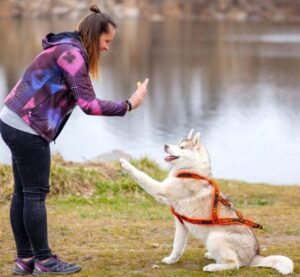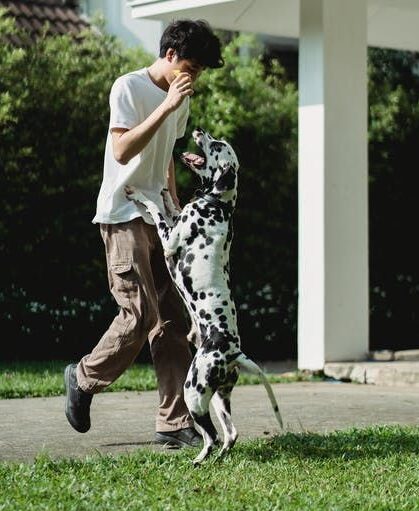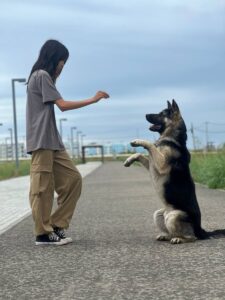Training Tips for Pet, Cat, Puppy & Dogs
Crate training a puppy & Dog Crate training:- Puppy training / Dog training focuses on teaching your dog effectively and efficiently while fostering a strong bond. It combines traditional methods with modern approaches to make learning fun, engaging, and results-driven. Here’s how you can train your dog the smart way:
1. Understand Your Dog’s Personality Every dog is unique. Some are eager to please, while others may be independent or shy. Tailor your training techniques to suit your dog’s temperament and energy level.
“Dog Crate training #crate training a puppy #puppy training #petsmart dog classes #petsmart dog training”
- High-energy dogs may need shorter, active sessions.
- Shy dogs benefit from patience and gentle reinforcement.
-

How Dog Crate training & puppy training, petsmart dog training tips Article
2. Use High-Value Rewards Identify what motivates your Puppy and dog the most:
- Treats: Use special treats they don’t usually get.
- Toys: Playtime can be a great reward.
- Praise: Verbal encouragement and petting work wonders for many dogs.
Smart trainers vary rewards based on the task’s difficulty to keep the dog interested.
3. Leverage the Power of Clicker Training Clicker teaching is a highly effective technique that uses a clicker to mark desired behavior.
- Step 1: Teach your dog to associate the clicker sound with a reward.
- Step 2: Use the clicker to trail the exact moment your dog perform a right behavior.
- Step 3: Reward immediately after the click.
This method improves precision and speeds up learning.
4. Focus on One Skill at a Time Avoid overwhelming your dog by trying to teach multiple commands simultaneously. Start with one basic command and practice it until your dog masters it. Gradually add more complex commands.
5. Incorporate Mental Stimulation Smart training goes beyond physical activities. Keep your dog mentally stimulated by:
- Using puzzle toys or treat-dispensing toys.
- Teaching advanced tricks like “roll over & spin.”
- Playing hide-and-seek with toys or treats.
Mental challenges prevent boredom and make training sessions more effective.
6. Train in Short Bursts Dogs have limited attention spans. Keep training sessions short, around 5–10 minutes, and repeat multiple times throughout the day. This keeps your dog active and intent to learn.
7. Use Real-Life Scenarios Incorporate training into daily routines:
- Teach “wait” at doorways.
- Use “leave it” during mealtime or when encountering distractions.
- Practice “come” while playing in the yard.
This approach reinforces commands in practical settings.
8. Reward Calm Behavior Smart training involves teaching your dog self-control. Reward calm and relaxed behavior, even when they aren’t actively being trained. For example:
- Reward your dog for lying quietly on their bed.
- Praise them for waiting patiently during car rides or at the vet.
9. Gradually Add Distractions Dogs learn best in a distraction-free environment. Once they master a command at home, introduce distractions:
- Practice “sit” at the park or during a walk.
- Teach “stay” with people or other pets nearby.
Gradually increasing distractions ensures your dog obeys commands in any situation.
10. Emphasize Socialization Expose your dog to different place, public, and other animals. A well-socialized dog is more confident and easier to train. Take your dog to parks, pet-friendly cafes, or group training classes to enhance their adaptability.
11. Teach “Smart” Commands Focus on practical commands that make daily life easier, such as:
- Place: Teaching your dog to go to a designated location.
- Touch: Use a target (like your hand) to guide your dog.
- Drop It: Useful for retrieving objects safely.
12. Avoid Negative Reinforcement Smart training avoids punishment, which can lead to fear or aggression. Instead, redirect unwanted behaviors:
- Replace chewing furniture with appropriate chew toys.
- Use “no or yes” in a calm tone, then reward correct behavior.
13. Track Progress Keep a journal or app to monitor your dog’s progress. Note which commands they’ve mastered and areas where they need improvement. This helps you adjust your training plan as needed. .PET CARE & GROOMING TIPS
14. Use Technology
- Training Apps: Apps like Puppr or Dogo offer step-by-step guidance.
- Smart Collars: Some collars provide real-time tracking and gentle corrections.
- Interactive Toys: Use tech-enabled toys to stimulate your dog’s mind during solo play.
15. Stay Positive and Patient The smartest training method is patience. Celebrate small wins, and remember that all dogs learn at their own pace. Consistency, kindness, and positive reinforcement build a happy, well-trained dog.
Conclusion Smart training combines effective techniques, modern tools, and a deep understanding of your dog’s needs. By staying consistent, keeping sessions engaging, and focusing on positive reinforcement, you can teach your dog essential skills while strengthening your bond. Training is creating a harmonious relationship with your furry companion. pet’s skin smooth and shiny Tips
Please Visit Our Other Website & Read More Article
These tips given in the article will help you in crate training puppy your pet, dog and puppy. #Dog Crate training #crate training a puppy #puppy training #petsmart dog classes #petsmart dog training
And you can also consult with people who training Puppy, dogs, cats and other pet and get some suggestions from them so that you can training your Puppy and dog at home.
The suggestions given in this article are taken from veterinary doctors and pet experts. This article has been written after taking information from them.
We may also make some mistakes in this article, so you must check it at your level once and if you find any mistake in the article, then you must tell us about it.
Dog Care Tips at Home: A Complete Guide to Beginners


1 thought on “Training Tips for Dogs & Puppy Easy Technique”